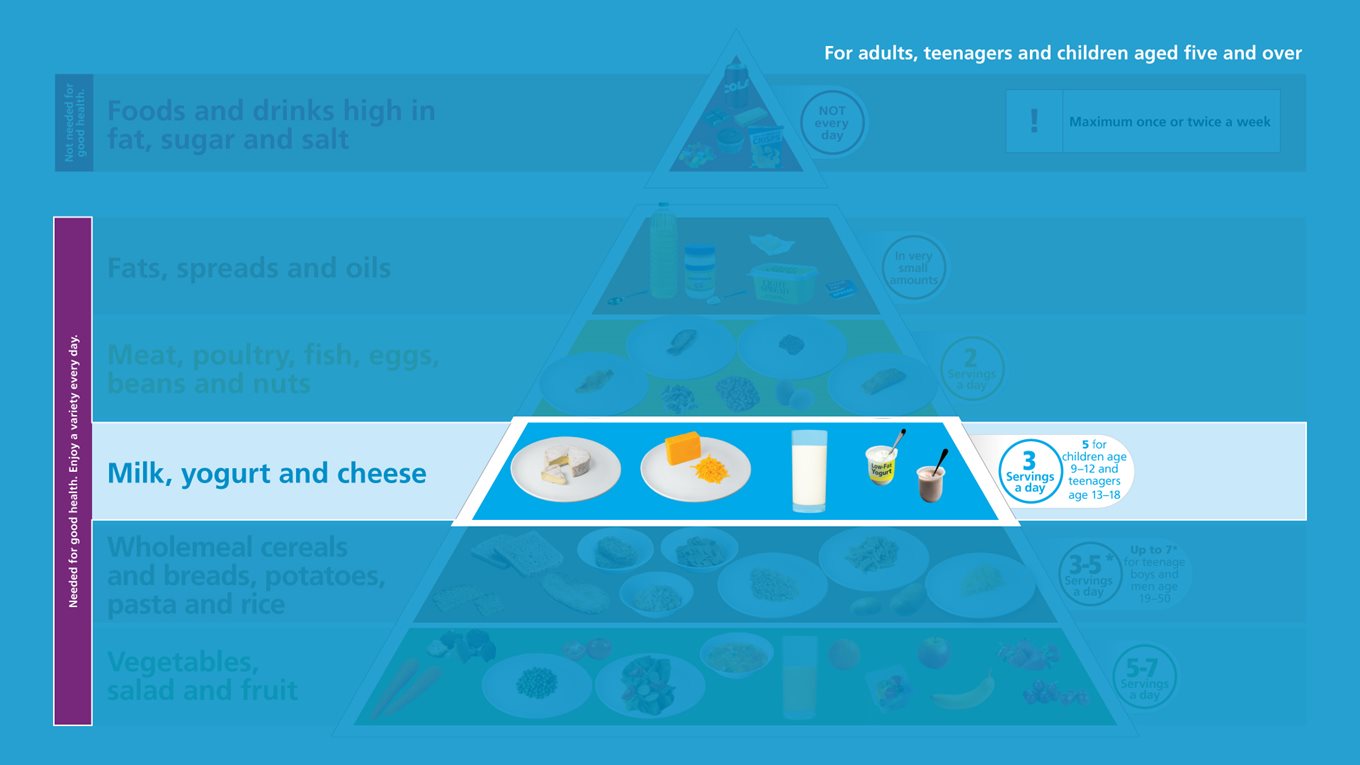Milk, yogurt and cheese

Dairy foods are a great source of calcium, protein and vitamins. Calcium is needed to build and maintain strong bones and teeth.
What is included in the dairy food group?
Milk, yoghurt, cheese, quark, fromage frais and cream cheese are the dairy foods that are included. Butter, cream and luxury yoghurts are high in fat and are foods to eat less often and in small amounts. Non-dairy alternatives include plant-based drinks, such as soya milk, yoghurts and cheeses.
How much should I eat?
Different age groups need different amounts of these foods.
What is a portion?
- One glass (200ml) milk/fortified plant-based alternative
- One pot (125g) yoghurt
- One bottle (200ml) yoghurt drink
- Two thumbs (25g) hard or soft cheese
Top tips
- Choose lower fat options, these provide the same amount of calcium but are lower in fat and calories
- For products like cheese and yogurt, check the label and go for ones lower in fat and sugars
- Choose milk and yoghurt more often than cheese. Cheese is a good source of calcium and protein but can be high in fat and salt
- If you’re using cheese to flavour a dish or a sauce, use smaller amounts of ‘mature’ or stronger flavoured cheeses like blue cheese
- Luxury yoghurts are generally high in fat, treat them as a dessert
- Plain lower fat yoghurts are a great choice for dessert with fruit
- Use low-fat milk in milk-based desserts and savoury sauces
- Plant-based dairy alternatives are naturally lower in calcium so check the label and choose those with added calcium.




